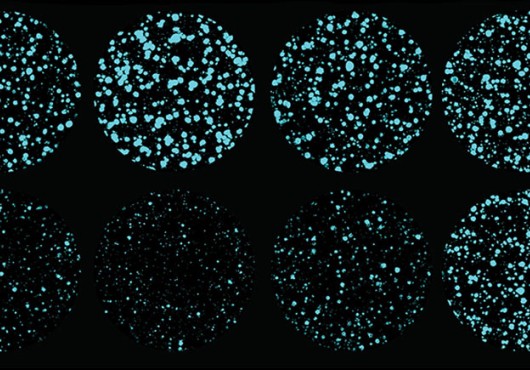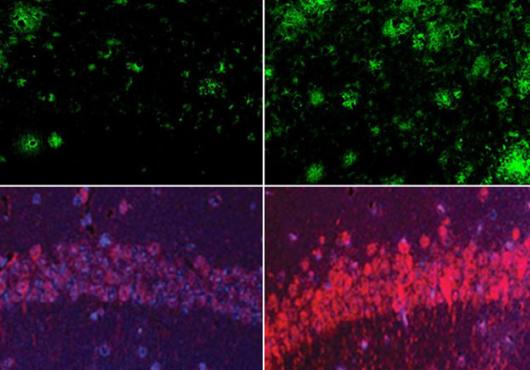
At a glance:
In a small study, a subset of female mice with high baseline anxiety levels, but not male mice, sought a starvation-like state in response to stress.
The mice’s facial expressions suggested that the state provided stress relief.
The study fills the pressing need for an animal model that captures willful starvation, a hallmark of anorexia nervosa.
Female mice prone to anxiety may actively seek out a starvation-like state in response to repeated exposure to stress, according to a team led by Harvard Medical School researchers at Beth Israel Deaconess Medical Center.
The study, published April 19 in Neuron, reports the first mouse model to capture the onset of willful starvation, a hallmark of anorexia nervosa in humans. The model could be useful for investigating the neural mechanisms underlying anorexia, which affects up to 4 percent of women and 0.3 percent of men and has the highest mortality rate of any psychiatric disorder.
“While anorexia nervosa has been documented for over 300 years, its underlying causes remain unknown,” said lead author Hakan Kucukdereli, HMS research fellow in medicine at Beth Israel Deaconess in the lab of Mark Andermann. “There has been the pressing need for a pre-clinical mouse model that captures the intentional seeking of a starvation state.”
Understanding the root causes of anorexia in humans could pave the way for better preventive measures and treatments. Common methods of treating the condition, such as psychotherapy and nutritional rehabilitation, are often ineffective, the authors said.
How hunger can curb anxiety
In healthy individuals, hunger is a mildly uncomfortable state that drives food-seeking behavior. Food restriction activates nerve cells in the brain’s hypothalamus, called AgRP neurons, which results in feelings of hunger: a signal that it’s time to eat.
In the lab, Kucukdereli and colleagues knew that stimulating these neurons in mice causes an artificial starvation state that motivates even well-fed mice to seek out another meal. They also knew that this starvation state can tamp down anxiety, thereby promoting food-seeking. To understand why, imagine a hungry mouse in a kitchen that needs to be bold enough to hunt for food, even when a cat is around.
Based on prior associations between stress, anxiety, and anorexia nervosa, Kucukdereli; senior author Andermann, HMS professor of medicine at Beth Israel Deaconess; and colleagues hypothesized that exposure to high levels of stress actually triggers individuals to willfully seek starvation as a means of reducing anxiety.
Preferences shaped by stress
The scientists trained 15 male and 17 female mice to run through a virtual reality corridor where they could choose to stop in one room associated with stimulation of their AgRP neurons, which generated hunger signals, or a second room associated with no stimulation.
In the absence of stress, male mice avoided AgRP stimulation, whereas only a few female mice showed a strong aversion to it. After repeated stress, however, many of the mice behaved differently. When the researchers exposed the mice to a five-minute period of unpredictable, mild tail shocks, the males, on average, became less averse to AgRP stimulation, and female mice, on average, actually preferred AgRP stimulation.
“A subset of females, but not males, began to vigorously seek this starvation-like state following stress,” said Andermann.
To the team’s surprise, individual mice’s baseline levels of anxiety-like behavior measured weeks before the experiment could predict which females would develop a preference for the starvation-like state. The findings suggest that starvation offers relief from anxiety associated with stress, particularly for the subset of female mice with high baseline anxiety levels.
It remains to be determined how the findings translate to humans, including whether the work helps explain why girls and women experience anorexia nervosa at higher rates than boys and men. The authors note that the onset of anorexia nervosa in humans is often preceded by childhood trauma or other stressful experiences.
Facial expressions offer further clues
For additional insights into the mice’s mental states, the researchers developed a machine learning model trained to recognize the animals’ facial expressions before and after hunger-inducing AgRP stimulation. The model found that following stress, female mice with a strong preference for AgRP stimulation showed clearer changes in facial expression, which the authors propose might reflect relief associated with a reduction in anxiety.
That possibility raises an intriguing parallel with humans, note the researchers, as some people with anorexia describe the starvation-like state as pleasant.
Future research can link moment-to-moment changes in facial expressions with ongoing activity of neurons in brain regions that track physiological states or that process negative emotions, said Kucukdereli.
“Our approach lays the groundwork for future work to identify the neural circuits that underlie the voluntary maintenance of long-term starvation in individuals with anorexia nervosa,” he said.
Authorship, funding, disclosures
Other co-authors included Oren Amsalem, Trent Pottala, Michelle Lim, Leilani Potgieter, Amanda Hasbrouck, and Andrew Lutas.
This work was supported by a BBRF Young Investigator Grant; the Davis Family Foundation; the National Institutes of Health (grants F32DK112589; T32NS007484; R01DK109930; DP1AT010971; R01MH12343); a McKnight Scholar Award; the Boston Nutrition and Obesity Research Center (grant P30 DK046200); and the Klarman Family Foundation.





